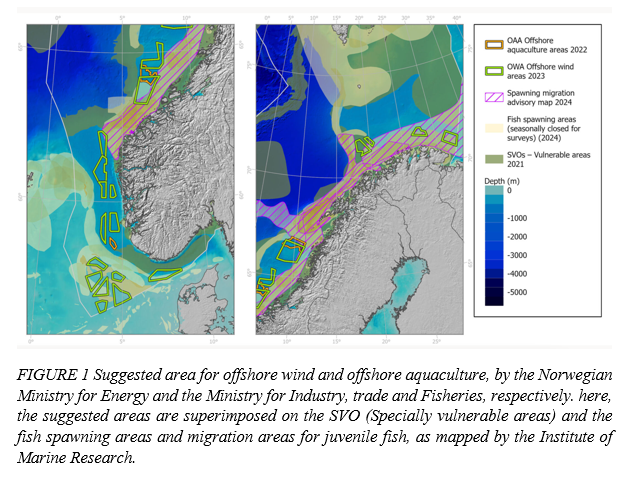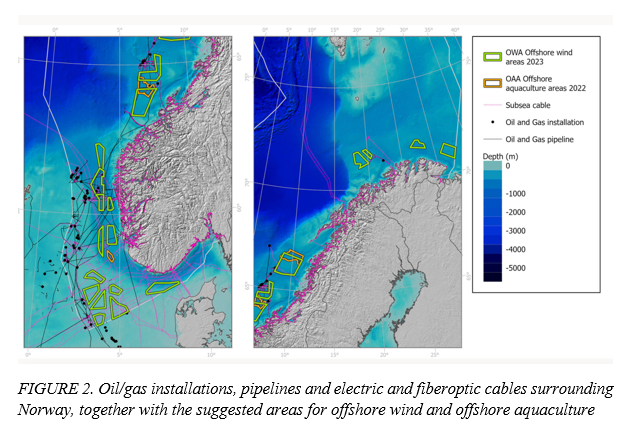URGENT NEED FOR MARINE SPATIAL PLANNING OF THE NORWEGIAN EEZ EMPHASIZED BY EXPANSION OF OFFSHORE AQUACULTURE, OFFSHORE WIND, AND OTHER INDUSTRIES
Europe´s need for increased energy and food security has been emphasized by the Ukraine war, and the weakening of the Trans-Atlantic alliance. Europe imports 70% of its seafood, and even with the inclusion of Norway, Iceland and the Faroes the continent is heavily dependent on import from outside Europe. To a large degree this is also the situation with energy, where the import of oil and gas from Russia must be replaced by non-European sources. Energy security and food security may be viewed as equally critical in a European as well as a global geopolitical context. Also, to counteract global warming, to adapt to a changing environment, and to facilitate CO2 emissions reduction, there is an urgent need to upscale renewable energy production (Maar et al. 2023)
Pressure is increasing for more extensive utilization of marine areas . This is especially true in the coastal zone (Bergh et al. 2023), but is becoming more evident in offshore environments . This requires careful study of the impact each industry has on its environment and on local communities, considering the cumulative effects from all industries combined. Careful consideration of uncertainties will be crucial to reduce the considerable trust gap among ocean stakeholders, such as fishermen, shipping industry, environmentalists, aquaculturists, and the renewable as well as fossil energy industries.
It should be emphasized that the Norwegian EEZ already is heavily exploited by fisheries and the oil/gas industry. As Figure 2 shows, especially the North Sea, but also the continental shelf towards the Norwegian Sea, and the shallower Barents Sea have a range of oil/gas installations, and
In conclusion, the expansion of “new” offshore industries are further emphasizing the need for Marine Spatial Planning (MSP) in the Norwegian EEZ (Pettersen et al. 2024). Careful consideration on the need for marine protected areas (MPAs) should in particular take into account important ecosystem services, as spawning areas and specially vulnerable areas, coral reefs and migration areas for fish juveniles.
References
Ø. Bergh A.C. Beck, A.N. Tassetti et al. 2023 Analysis of spatial conflicts of large scale salmonid aquaculture with coastal fisheries and other interests in a Norwegian fjord environment, using the novel GIS-tool SEAGRID and stakeholder surveys Aquaculture 574
M. A Maar. A. Holcback,. T. Boderskov. et al. 2023. Multi-use of offshore wind farms with low-trophic aquaculture can help achieve global sustainability goalsNature Communications Earht Environ. | (2023) 4:447 | www.nature.com/commsenv
S. S. Pettersen, Ø. Bergh, Ø. Aarnes, et al. 2024. Scenarios for offshore wind co-existence opportunities and trade-offs Journal of Physics: Conference Series (JPCS) 2745

